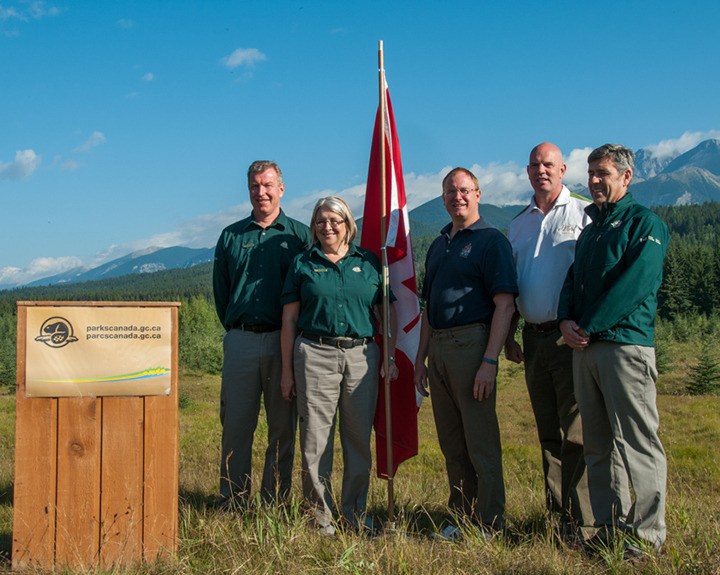Canada’s Minister of Environment, Leona Aglukkaq, Kootenay-Columbia MP David Wilks and Dr. Colin Carrie, parliamentary secretary to the Minister of Environment and the MP for Oshawa, announced an investment to enhance motorist and wildlife safety through the construction of additional wildlife crossing structures in Kootenay National Park on Wednesday, August 27th at the Kootenay Warden Crossing Station.
Carrie described the second phase of Parks Canada’s Conservation and Restoration Program as a 9.6 million dollar investment that will establish 6.5 kilometres of fencing and five crossings along one of the deadliest stretches of Highway 93.
The monitoring of structures implemented by Banff National Park — an international leader in highway-related mitigation — set the precedent for the models to be established in Kootenay National Park, said Carrie.
“Careful monitoring has shown the (current) underpasses have been used by a diversity of animals including deer, moose, wolves and bears. These structures support safe passage, protect predator-prey relationships, and help to conserve biodiversity, while protecting wildlife populations,”said Carrie.
In 1996, the Trans Canada Highway in Banff National Park established a state-of-the-art system that installed fencing on both sides of the twinned highway to keep wildlife from direct highway access.
The construction of overpasses and underpasses helped foster the integrated flow of vital habitats with the roads. Sustaining animal populations by allowing the animals to safely cross under and over the highways proved to have merit, while establishing the importance of new wildlife crossing structures in other areas.
“The Trans Canada Highway model is a world-class example of how infrastructure and human safety come together to restore ecosystems,” Carrie said.
The estimated cost for a moose collision is $30,000.This number includes damages to life, vehicles and medical expenses.
“The cost of these structures can be absorbed in the sense that they are built for the long term. It’s a long-term investment that adds up when the numbers of multiple collisions over a period of years is determined,” said Rick Kubian, resource conservation manager for Parks Canada.
“There are three prongs to the project — the reduction in wildlife mortality, that’s the big one and over time relatively easy to measure. Secondly hand-in-glove with the first objective is the increase in driver safety, and our third objective is around connectivity,” he said.
In scientific terms, this entails enabling wildlife to use the entire valley bottom without, or with minimal, interference.
“That’s what these structures are about — we want a road that’s safe to drive on and one that people can move through efficiently and with minimum impact.”
The creation of a flowing system is of utmost importance and part of the challenge, according to Trevor Kinsley, project manager for Parks Canada.
“Banff — that’s kind of the big driver, we’ve been into it for over 30 years and we can build on those successes,” he said.
“What differs here is that we’ve got these major transportation corridors running through our national parks and that creates pretty significant challenges — the reason for the park was driven by the need for a road, which isn’t common in places like Yosemite or in Yellowstone. They didn’t have the major infrastructure issues that led us here.”
The concern of the project is to facilitate transportation from two different perspectives: maintaining the highway effectively and conserving an effective ecology, which also harnesses the movement of people and wildlife as organically as possible.
The structures are built in a manner conducive to the surrounding habitat. “When overpasses are built, we vegetate them, but not the underpasses because of the lack of sunlight down there,” said Kinsley. “We will also put in some trees and a pond if there is an existing gap on the highway.”
The animals are adaptive and, given enough time, they have shown that they will use the structures.
“Even if they don’t look pristine, if they’re in a place where animals encounter them, there will be a tendency for the animals to use them,” said Kinsley.
According to Wilks, in the end it’s about safety.
“Even if it’s just a stretch of five kilometres, if that stretch helps prevent something from occurring, there is absolutely no doubt in my mind that we should continue in the future. It’s about safe road travel, and all of Alberta (is) on the road (for long weekends),” Wilks said.
The new fencing and crossings in Kootenay National Park are slated to start next spring.
By Erin Knutson
